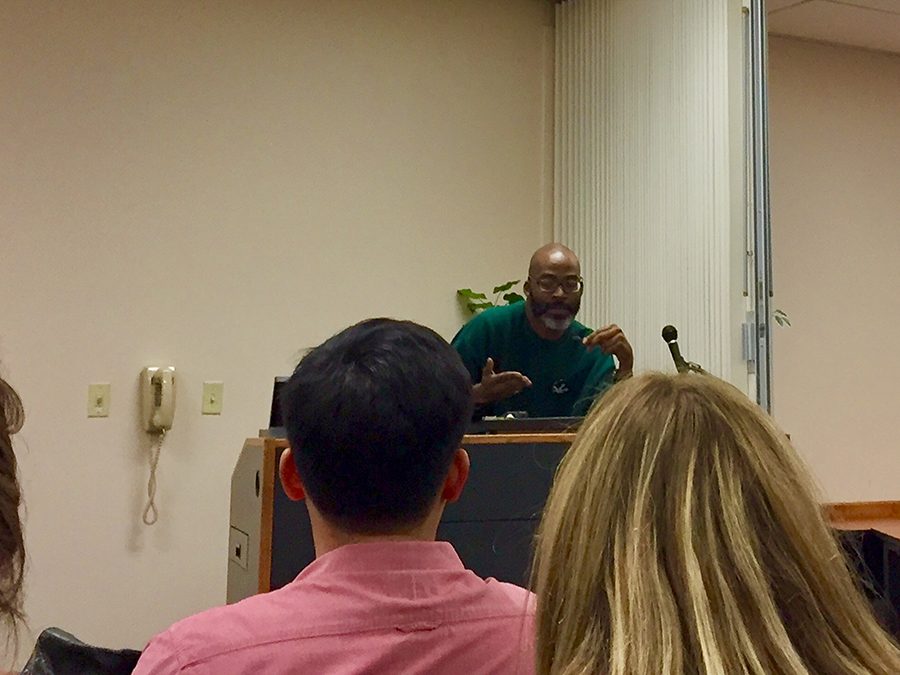From its humble beginnings in the Bronx in the 1970s to the mainstream multibillion-dollar industry it is today, hip-hop has always been at the forefront of what is new and exciting in music.
However, hip-hop is more than a musical genre and has a much wider reach than its American origin would suggest. It’s a movement characterized by multiple forms of expression including not just rapping but DJing, breakdancing and graffiti art that reaches people of all nationalities and backgrounds.
On Thursday April 6, “Diaspora Sound: The Movement of Transnational Hip-Hop” was held at San Diego State to examine the role of underground hip-hop as a barometer of cultural and political change.
Sponsored by the Common Experience Program, the event represented the intersection of several academic departments, namely Italian, Chicano and Chicana Studies and African-American Studies, to recognize hip-hop as a tool of empowerment for a diverse range of communities.
“Hip-hop is truly a movement that transcends national borders,” said Clarissa Clò, director of Italian Studies and a key orchestrator of the event.
Clò, who holds a doctorate in literature, and her collaborators, Chicano and Chicana Studies professor Emily Hicks, and religious studies assistant professor Roy Whitaker, sought to bring awareness to the work and impact of artists that may be less known in the U.S.
“You don’t think of hip hop in other nations like Italy, Japan, Germany, etcetera,” Clò said, “But really they’re making artful and activist music just as American artists are.”
The day began with a freestyle session and showcase led by a selection of students. Their pieces reflected both personal experiences with the genre as well as strong political messages.
However, the bulk of the event was the keynote roundtable session comprised of a group of unique and esteemed voices.
First up was Joseph Sciorra, director of academic and cultural programs at the John D. Calandra Italian American Institute at Queens College in New York. Sciorra donated to SDSU’s Italian Hip-Hop archive, the most extensive of its kind.
With his keynote speech, Sciorra placed the archive into historical context, sharing tracks from the first and second waves of Italian hip-hop. In Italy, hip-hop served as a mode of cultural expressivity as well as a bridge between ethnicities.
The next speaker was Afro-Italian filmmaker, photographer, musician and activist, Medhin Paolos.
She spoke of her experience having the culture of hip-hop attributed to her throughout her life due to her race even though she had never actually belonged to it. She said she obtained a great deal of insight into her society’s perceptions of “black-ness” through the lens of hip-hop.
Jon Ivan Gill, a lecturer from Long Beach State University and scholar of religious studies, metaphysics, cultural studies, aesthetics and philosophy, touched on both the beauty and challenge associated with hip-hop’s transnational nature.
Parker Edison, local San Diego rapper, director and lecturer, ended the discussion with an insightful analysis of the artistry and impact of hip-hop music.
Edison described the hip-hop movement as the “New Jazz Renaissance,” meaning that it’s evolved to the point where its contributors aren’t just rappers anymore, but artists.
“Hip-hop makes it so that people are able to understand each other better,” Edison said.
However, Edison also emphasized that hip-hop is still a new art form, meaning that it will get more and more sophisticated as time goes on.
“With all this talk of walls and bans, we wanted to portray this as a movement that transcends and speaks to people in ways that cannot be stopped,” Clò said. “The beauty of events like this is that we can prompt ideas and conversations that we may not have had before.”












